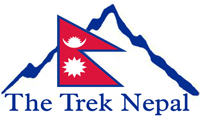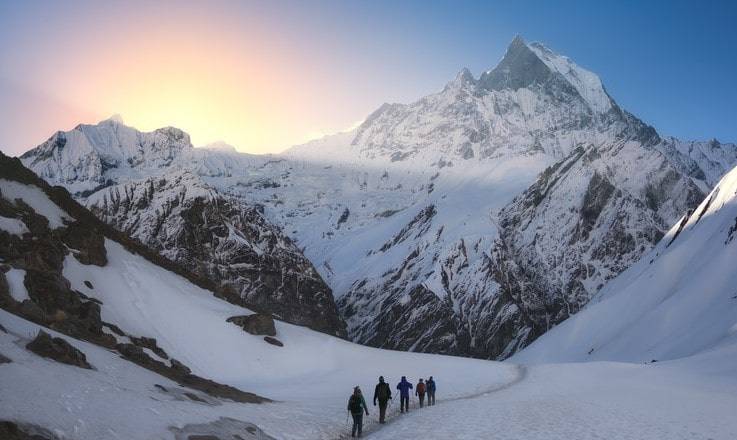Your guide to Annapurna region- We wish Your Safe Journey
The Annapurna region is by far, the most popular trekking destination in the world. Its popularity is not a mere façade owing to the diverse scenery and lifestyle. Guide to Annapurna blog shall provide you with a brief idea and know-how that needs to be understood before embarking on a journey to the Annapurna region. So, without further ado, let’s begin.
Highlights of the Annapurna region
The area of Annapurna is huge and consists of countless magical places. In this blog, we shall take a look at some of the best ones.
- Witness the diverse landscape that gradually transcends from green forested ones to arid and snowy ones
- Interact and mingle with people of different ethnicities that inhabit the Annapurna region like Gurung, Thakali, and Magar
- Relax in the soothing hot springs in Tatopani
- Observe the glorious picture of the Annapurna mountain range accompanied by neighboring peaks like Dhaulagiri and Macchapucchre
- Visit the Tilicho lake which sits at an elevation of 4919 meters
- visualize the colossal Kaligandaki gorge and mount the thrilling Thorang-La pass
What should I carry?
Most of us are perplexed by the question of what should I carry during my trek. Well, fret not as we have the answers.
1. Clothes
- Trekking boots
- 4 pairs of socks
- Trousers
- Thermals and windbreakers
- 3-4 T-shirts
- Pullover
- Light jacket
- Sleeping bag (if needed)
- Raincoat
- Gloves
- Cap
- Sun hat
2. Snacks
- Biscuits
- Chewing gum
- Chocolate
- Noodles
3. Toiletries
- Towels
- Soap
- Shampoo
- Toothbrush
- Sun-screen
- Moisturizers
- Face-wash
- Wet wipes
5. Medical supplies
For medicine, it is better that you carry pain killers and medicines for headaches and nausea. If you are suffering from any diseases, then you must carry them.
6. Other supplies
- Bag cover
- Camera battery
- Flashlight
- Lighter
- Charger
- Trekking pole
- Pocket knife
- Small book
This information is not only helpful for trekking in the Annapurna region but other treks too that you might do in the future.
Accommodation Facilities
With the increase in travelers, the number of tea houses and lodges in the Annapurna region is increasing. Pokhara, which is the gateway of the Annapurna region, is equipped with fine hotels and lodges. As you move deeper into the Annapurna region, the accommodation facilities are simple and can be a bit expensive too. The accommodations have basic facilities and the internet is rare. Also, when you move to higher elevations, a hot shower will cost some bucks.
Physical Conditioning
When you trek in the Annapurna region, you need a certain level of fitness. This guide to Annapurna blog shall provide you some insight as to the type of physical fitness that you need to have. As the treks include walking for prolonged periods, we advise you to indulge in running and jogging at least a month before starting the trek. It will help to develop your endurance and strengthen your legs.
It is equally important to train your arms and shoulders too as they will bear the burden of carrying trekking equipment. Be sure to eat healthy while doing the exercises.
Treks in the Annapurna region
Countless treks take place in the Annapurna region. They range from 3 days to more than 20 days. Here we shall take a look at some of the frequented ones.
- Annapurna Base Camp trek
- Annapurna Sanctuary trek
- Annapurna Circuit trek
- Ghorepani Poon hill trek
- Mustang Valley trek
- Upper mustang trek
- Annapurna Base Camp with Tilicho lake trek
Do I need travel insurance?
It is crucial to have travel insurance when you are trekking in Nepal. You need to make sure that your travel insurance covers the additional expenditure that occurs due to injuries and accidents. It should be sufficient to cover costs that arise from hospital fees, transportation, and helicopter rescue.
Best season to explore the Annapurna region
Numerous treks take you to the Annapurna region regardless of the season. On the other hand, if you want to explore the Annapurna region at the optimum time, then autumn and spring would be the best alternative.
The Autumn season in Nepal commences from mid-October and lasts till the beginning of December. In Nepal, the autumn season is considered as the tourist season. As a result, you can expect to see a huge number of tourists. On the bright side, the horizon looks clear, the valleys ooze with freshness and the weather is refreshing.
After autumn, spring is the best season to venture into the Annapurna region. In spring, the snow starts to melt and the environment is livelier. You can witness rhododendrons and other flowers blooming in the trails.
Traversing in the Annapurna region is not just a mere journey, but a milestone. During your travels, make sure that you follow the prescribed norms and make a positive impact too. We hope that the guide to Annapurna blog has solved the queries that you have. With this in mind, we hope to see you in Nepal soon.

